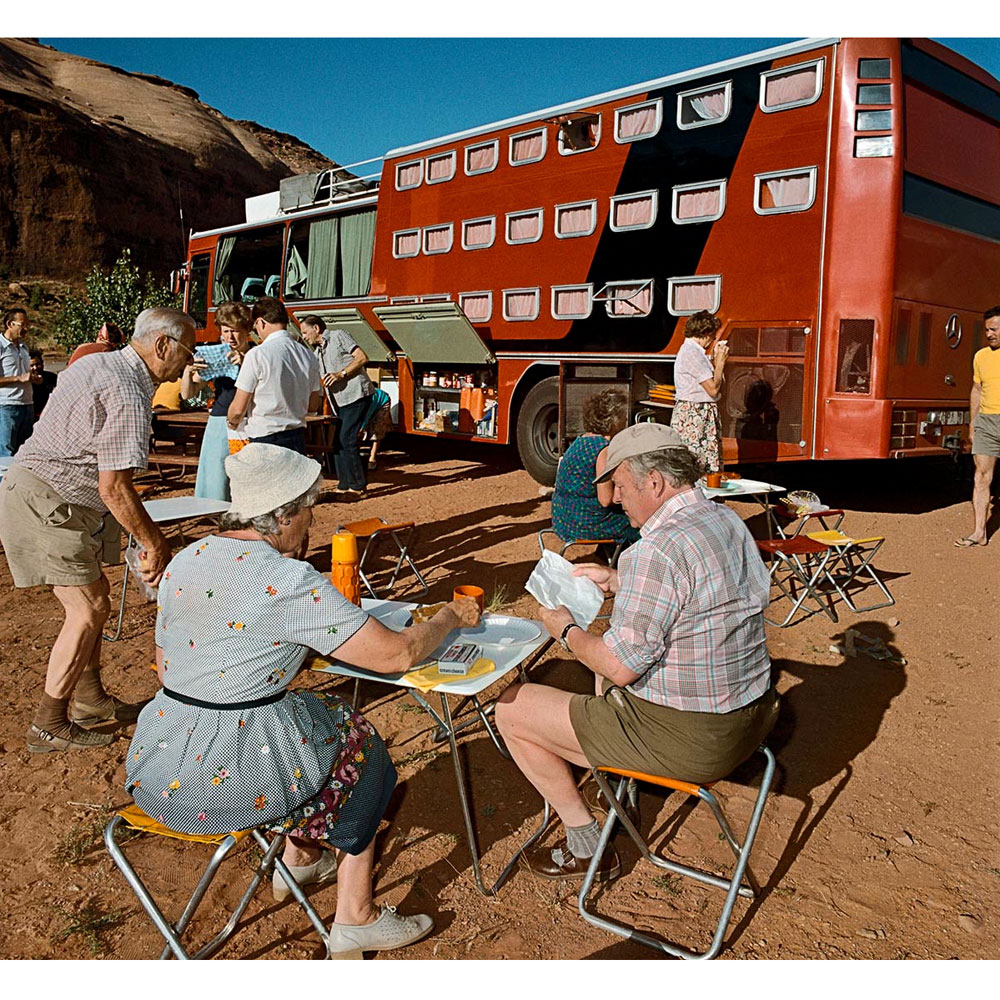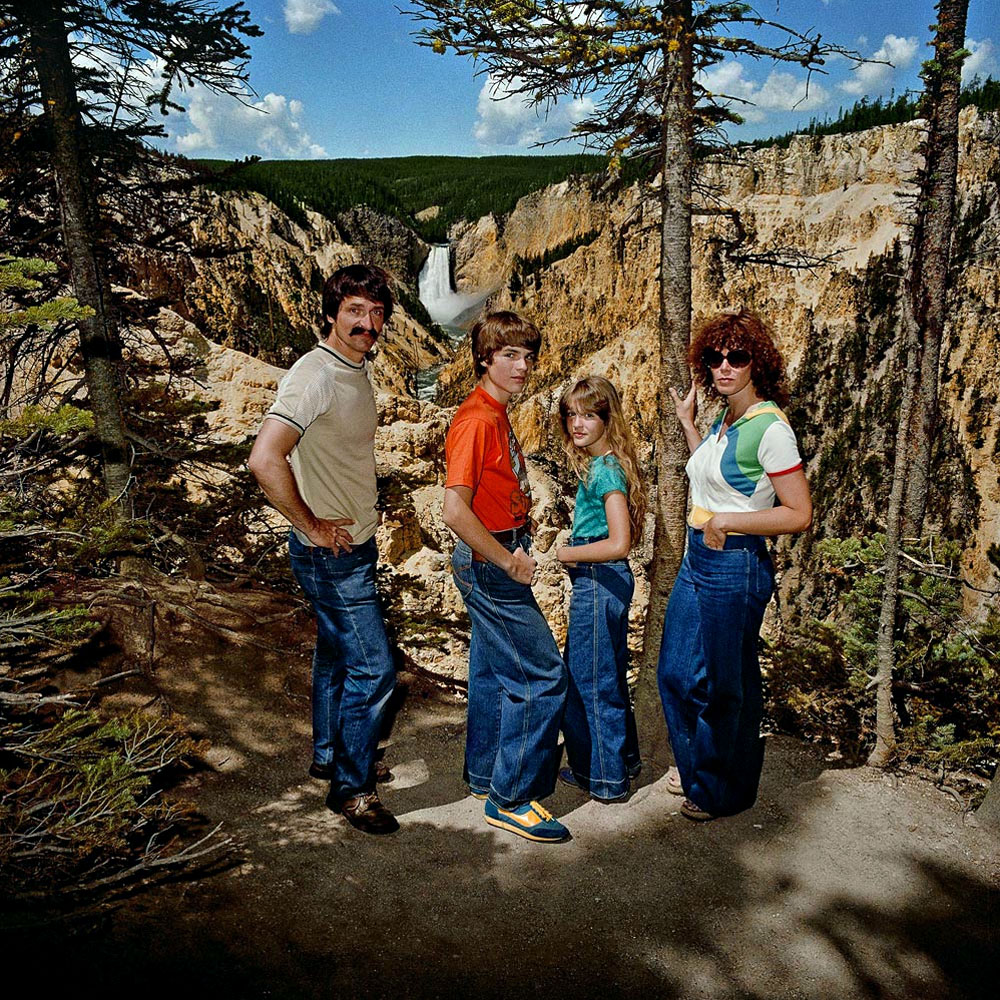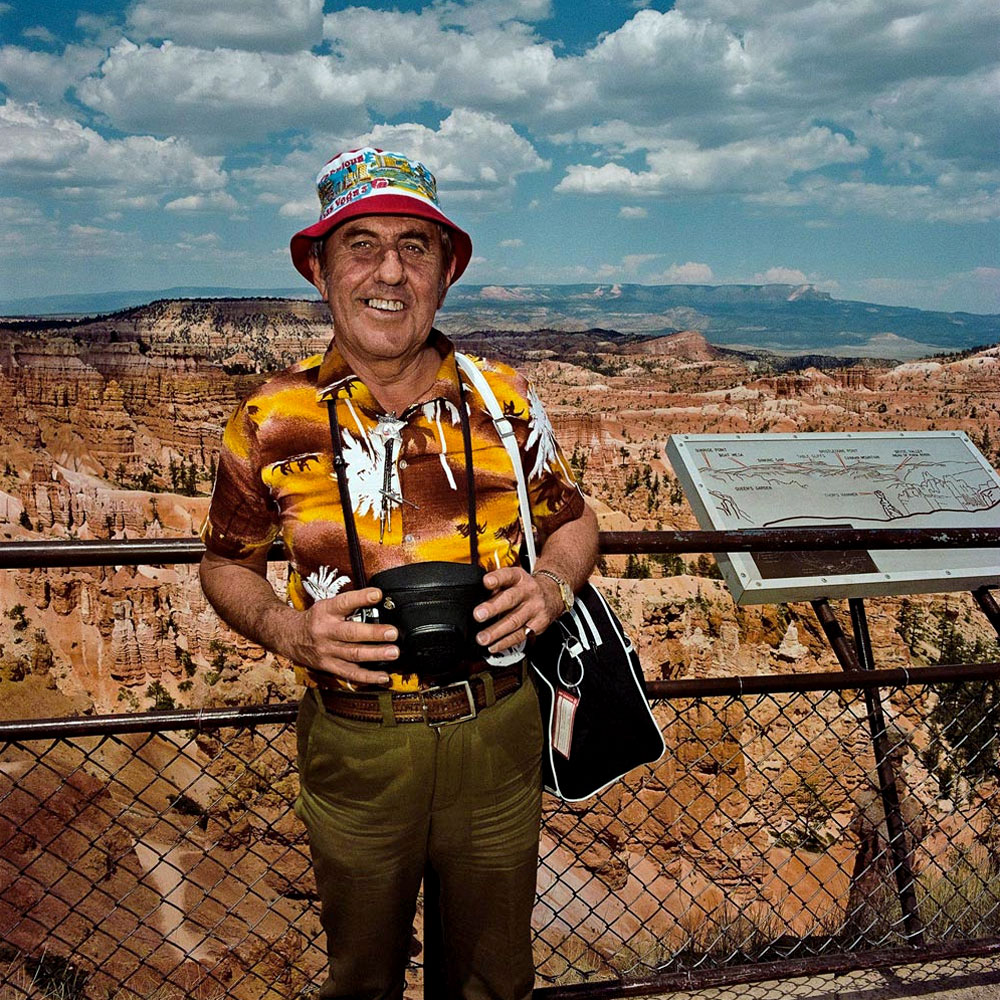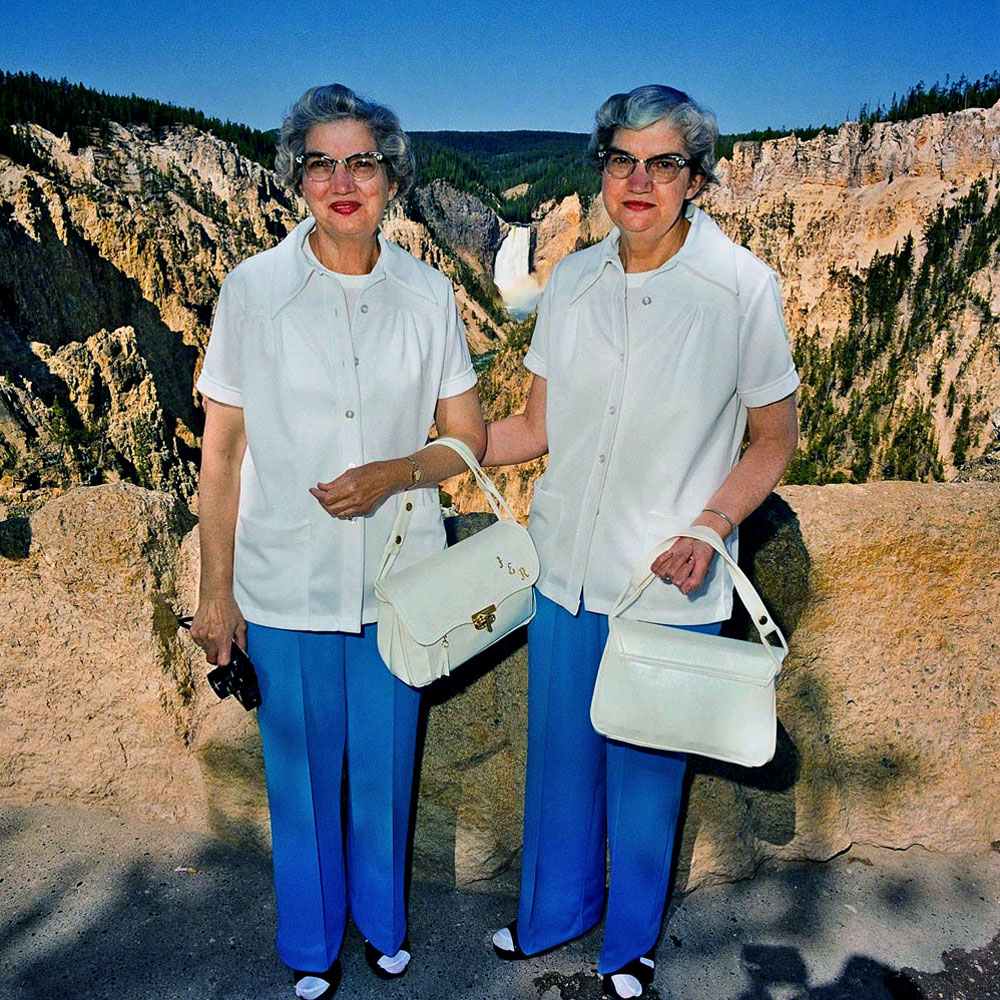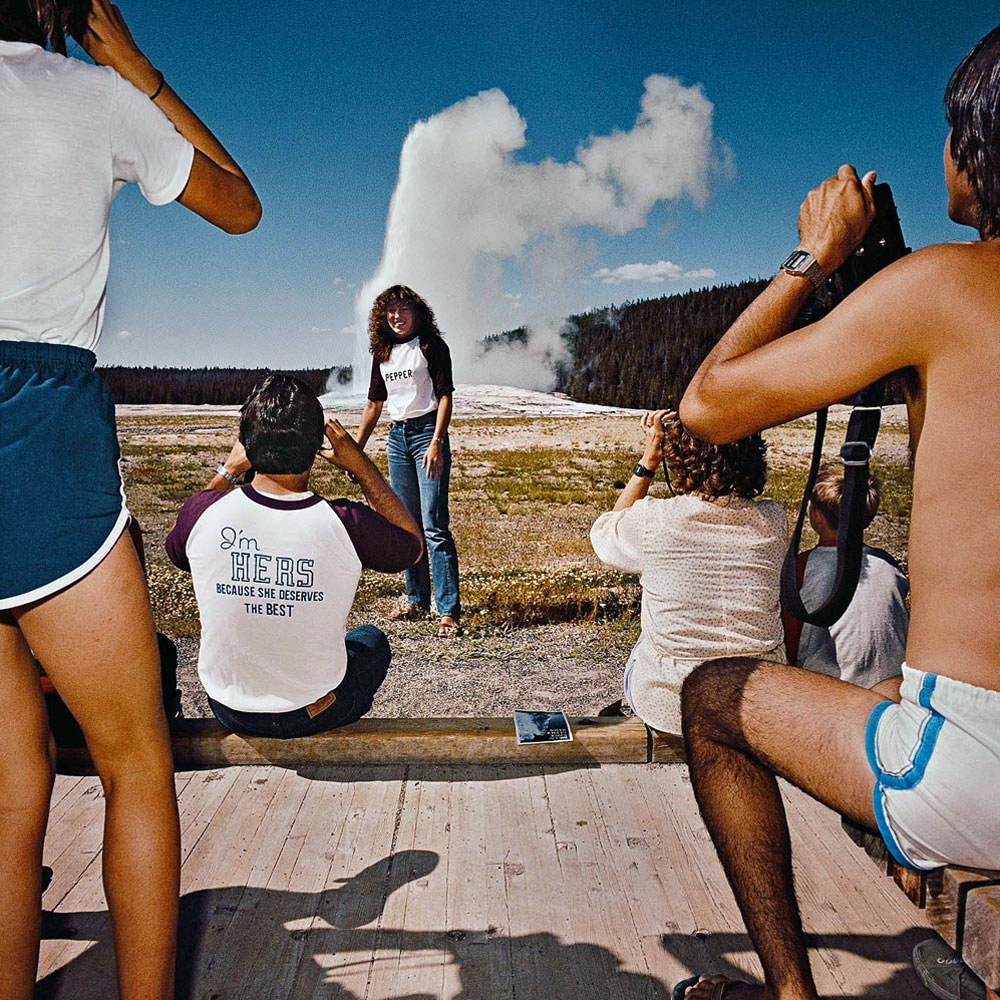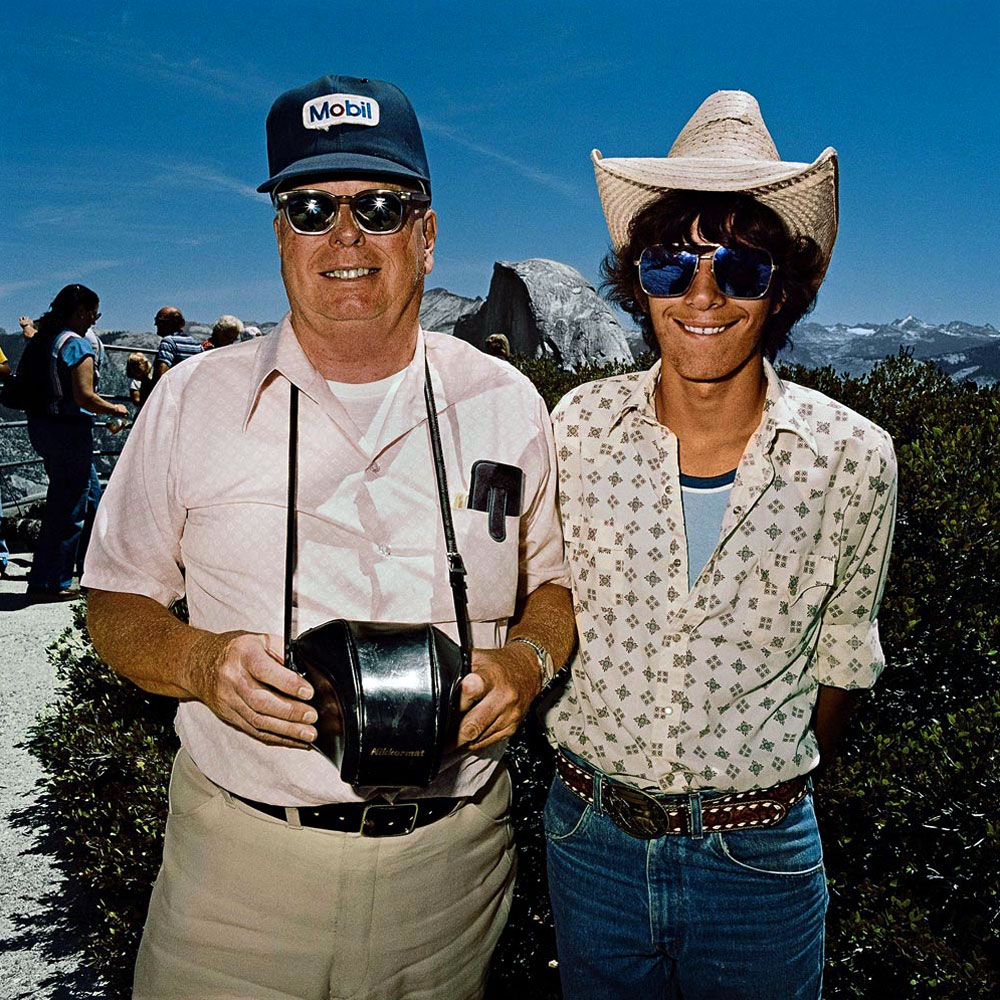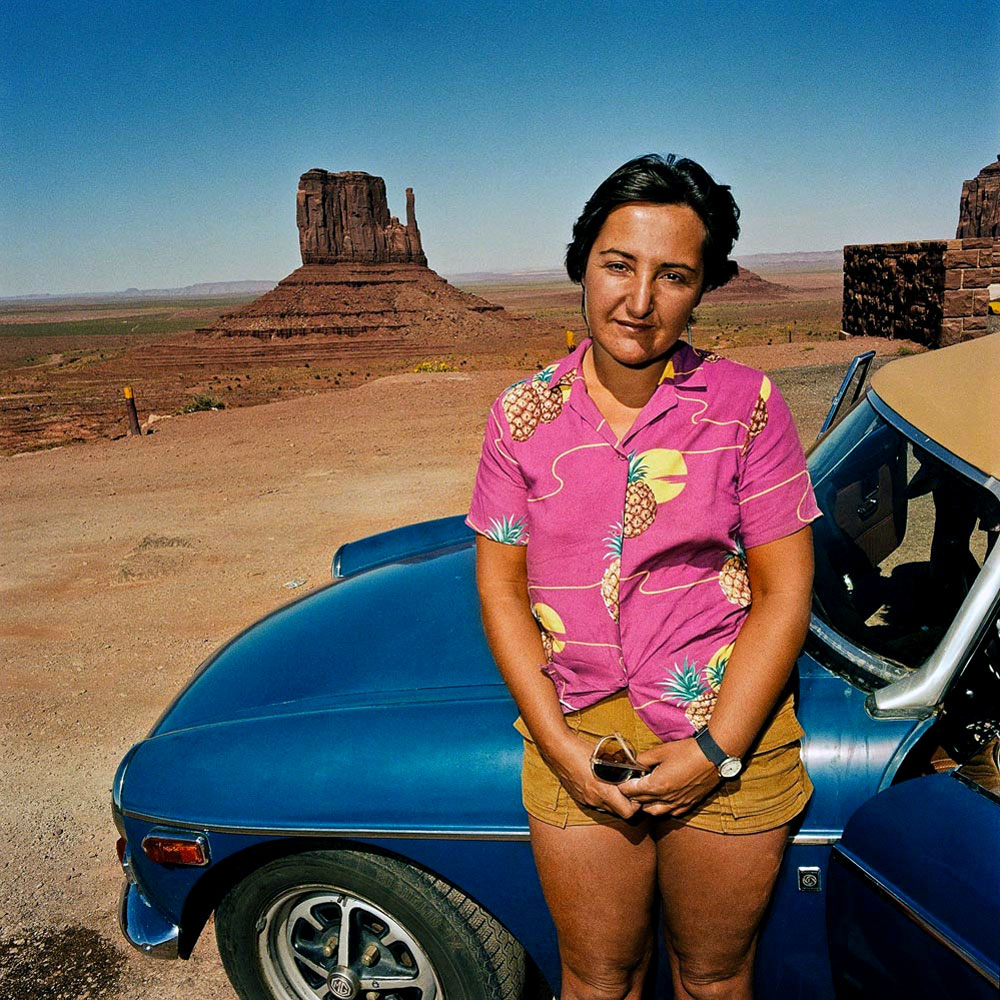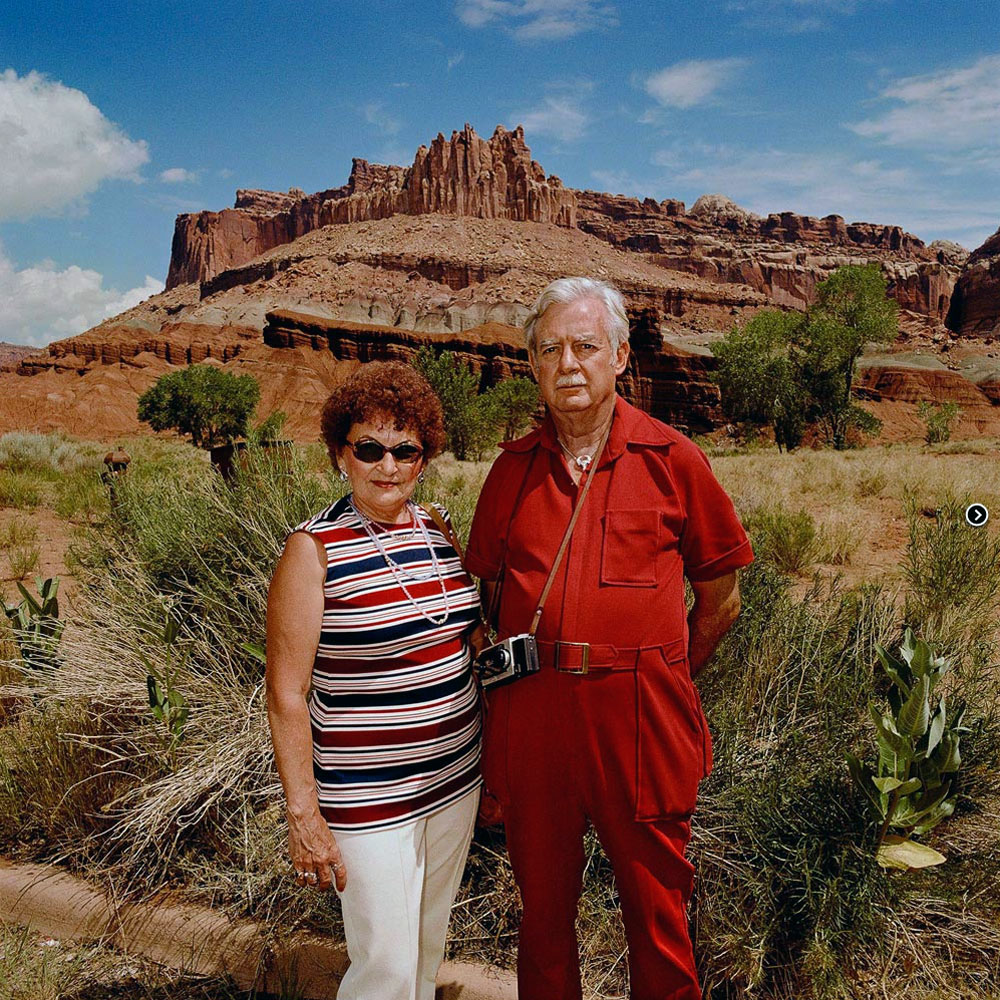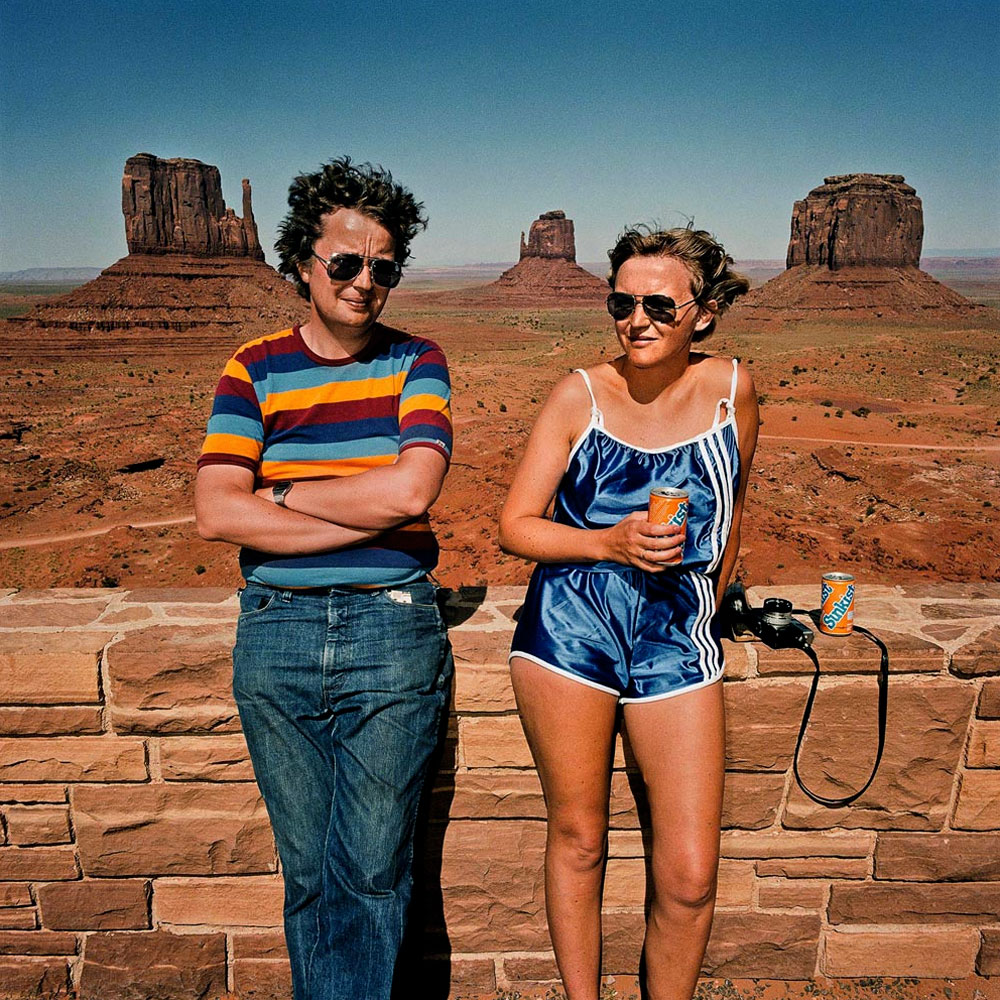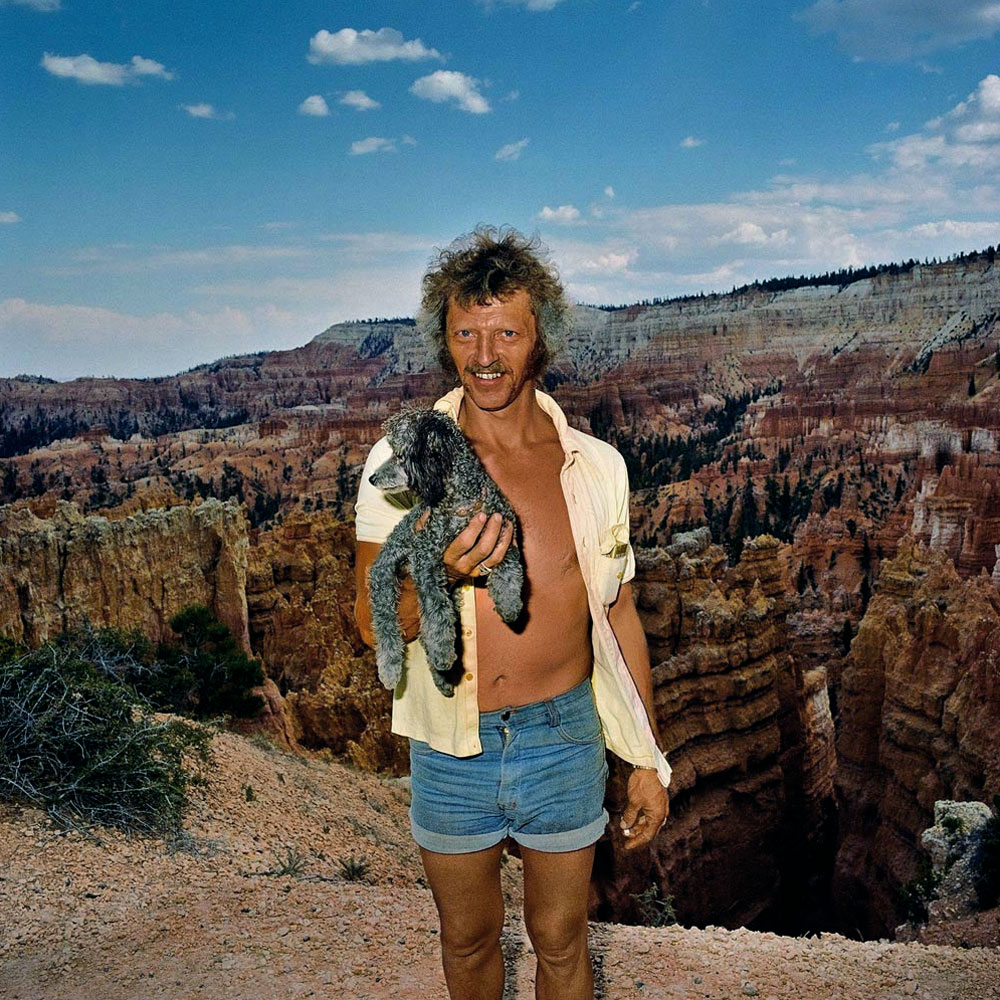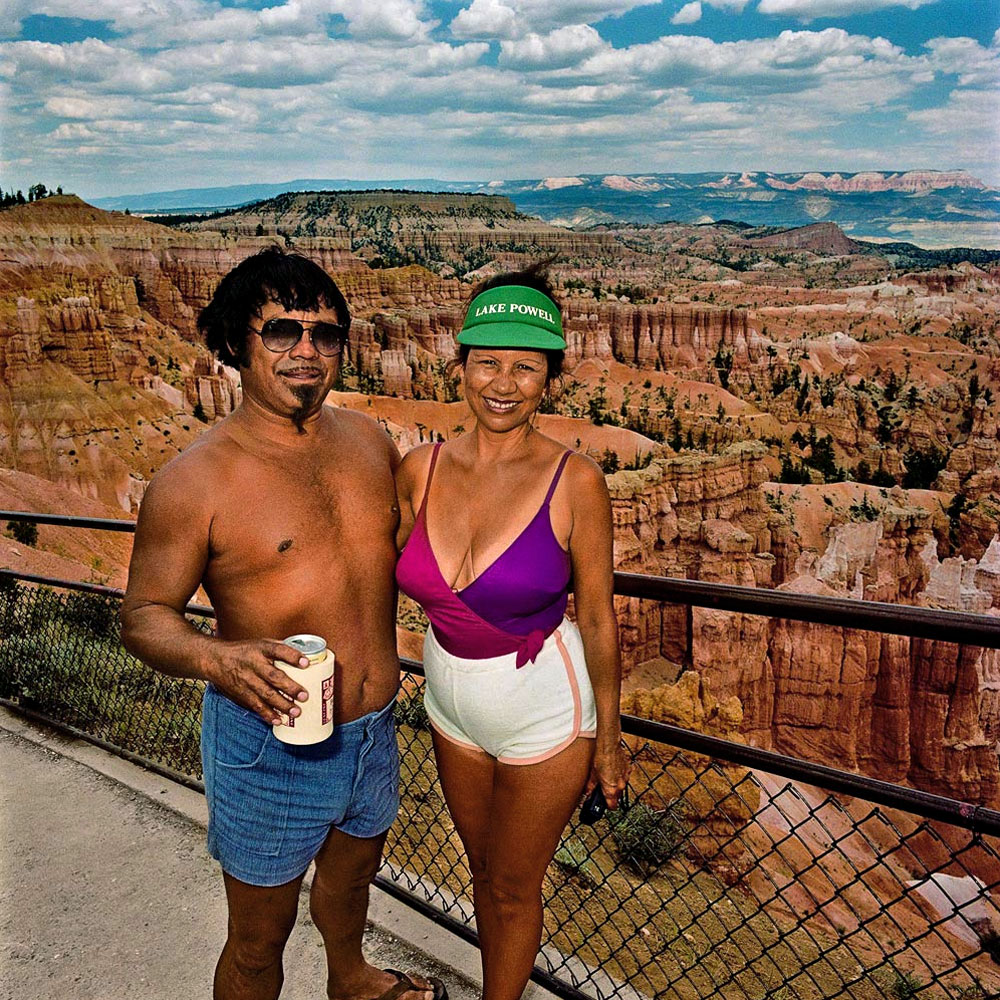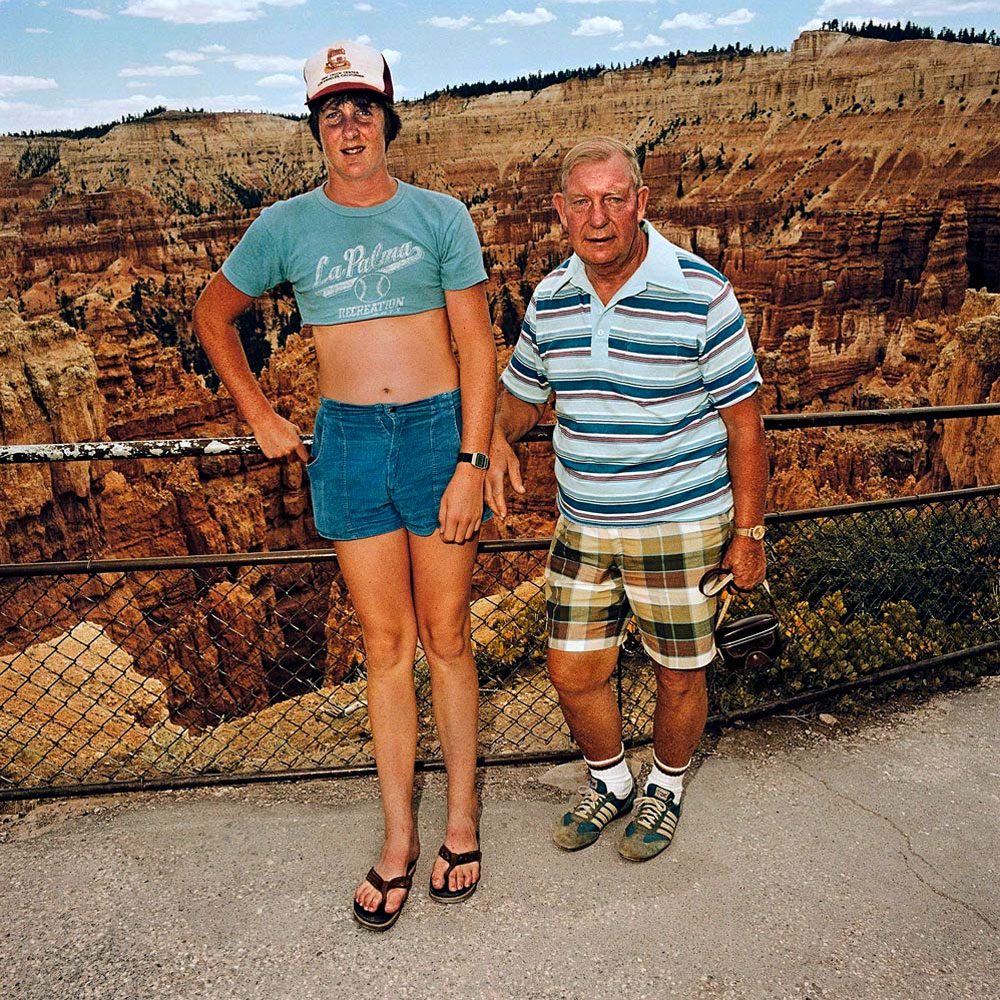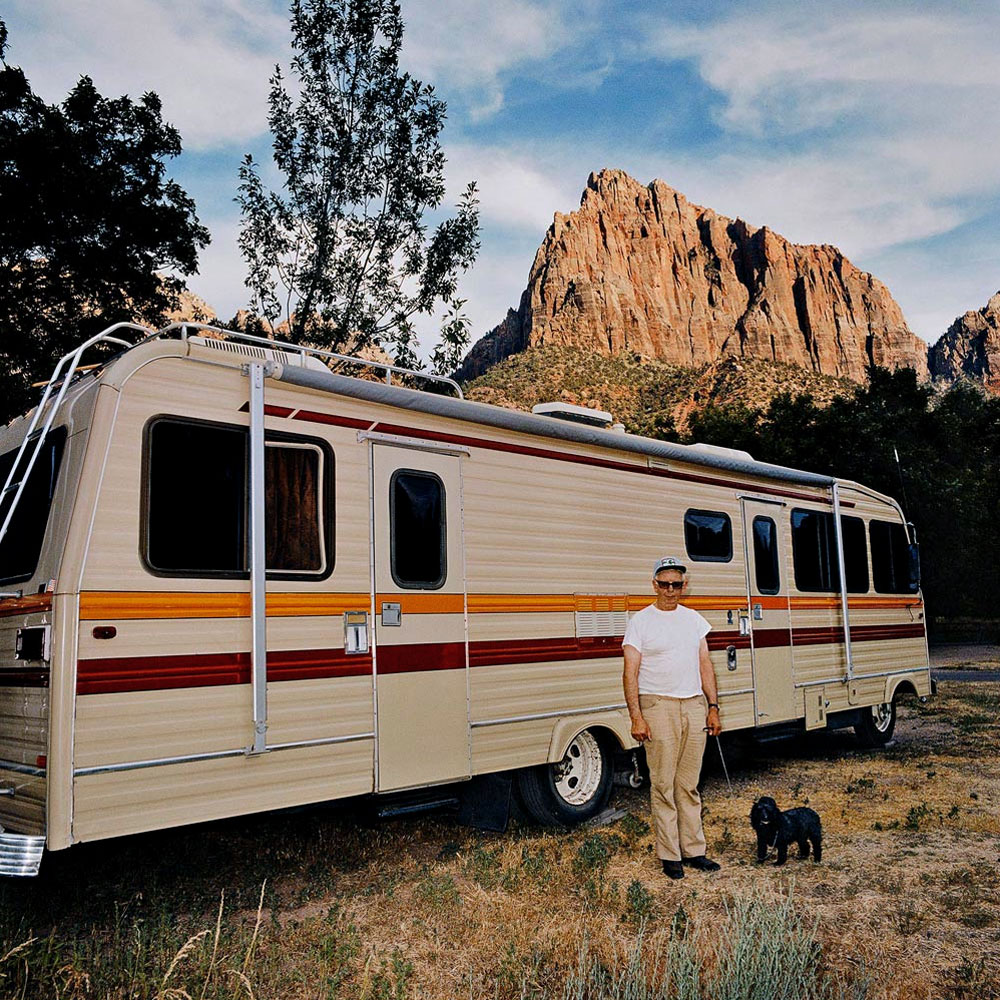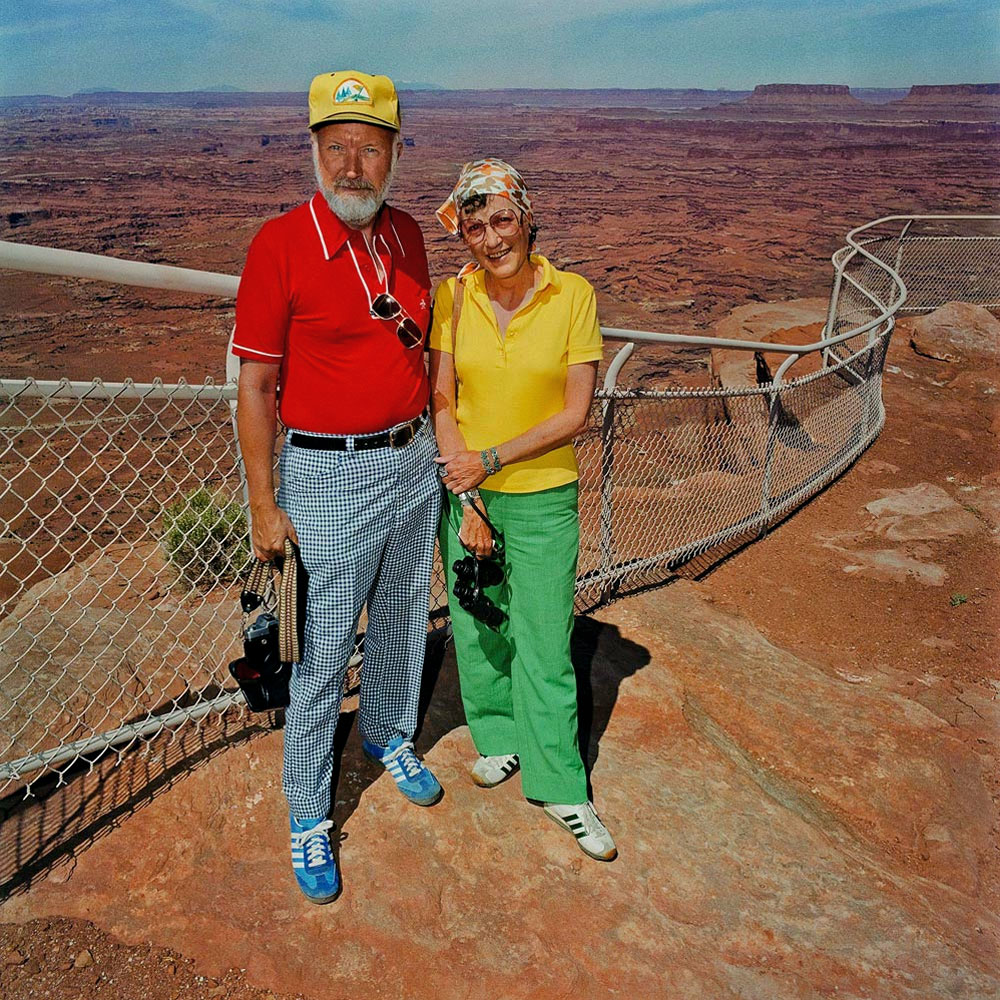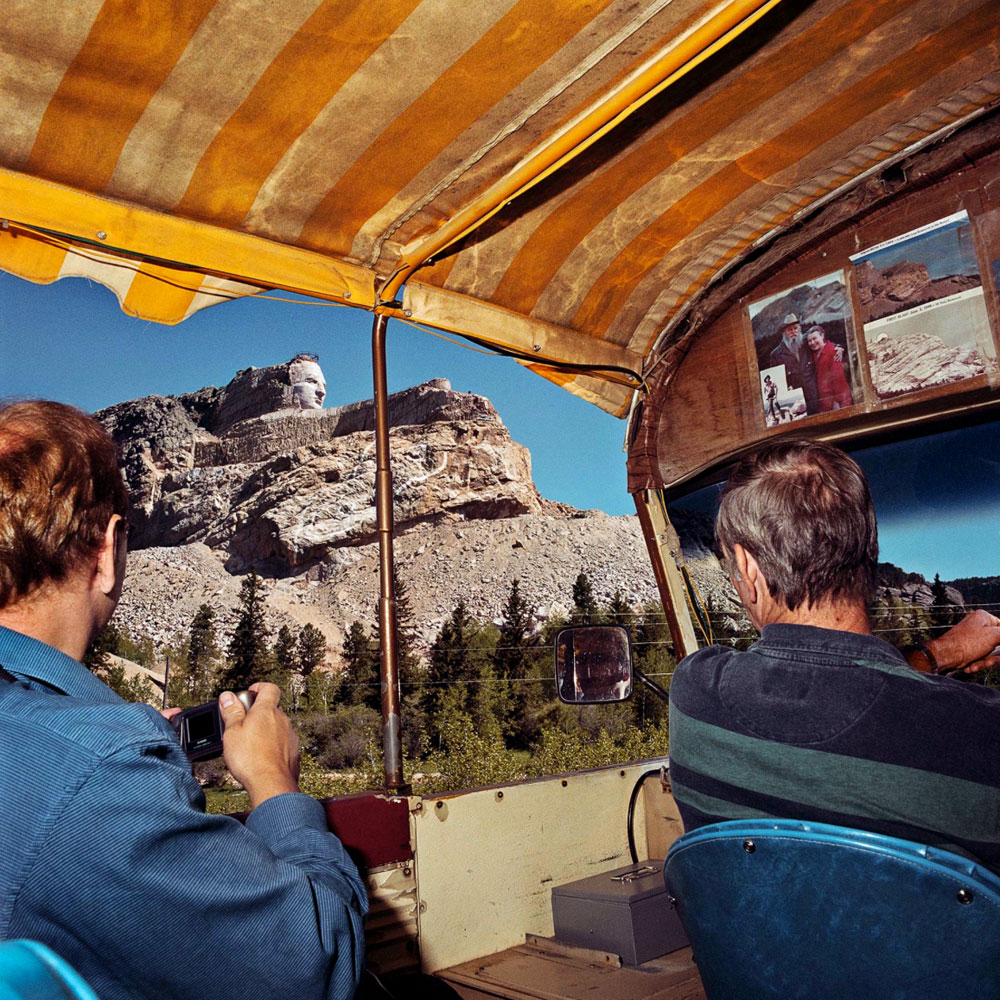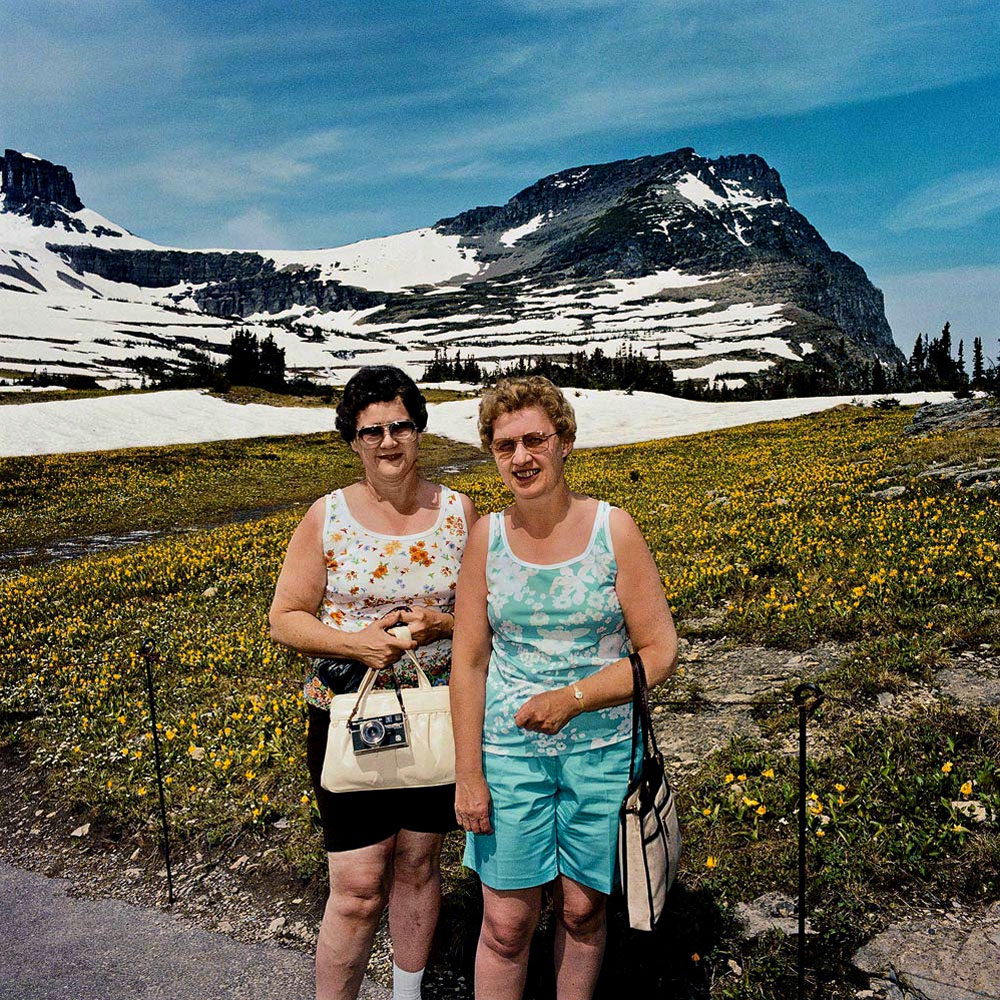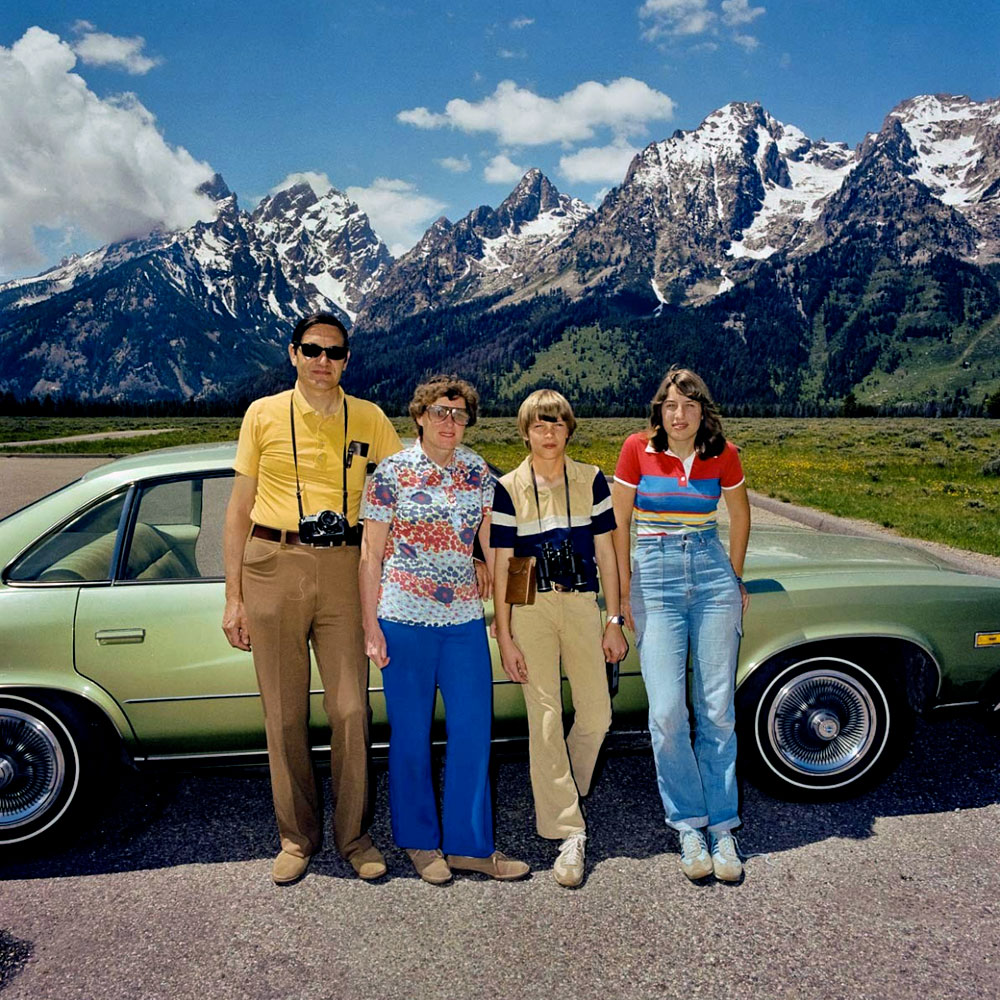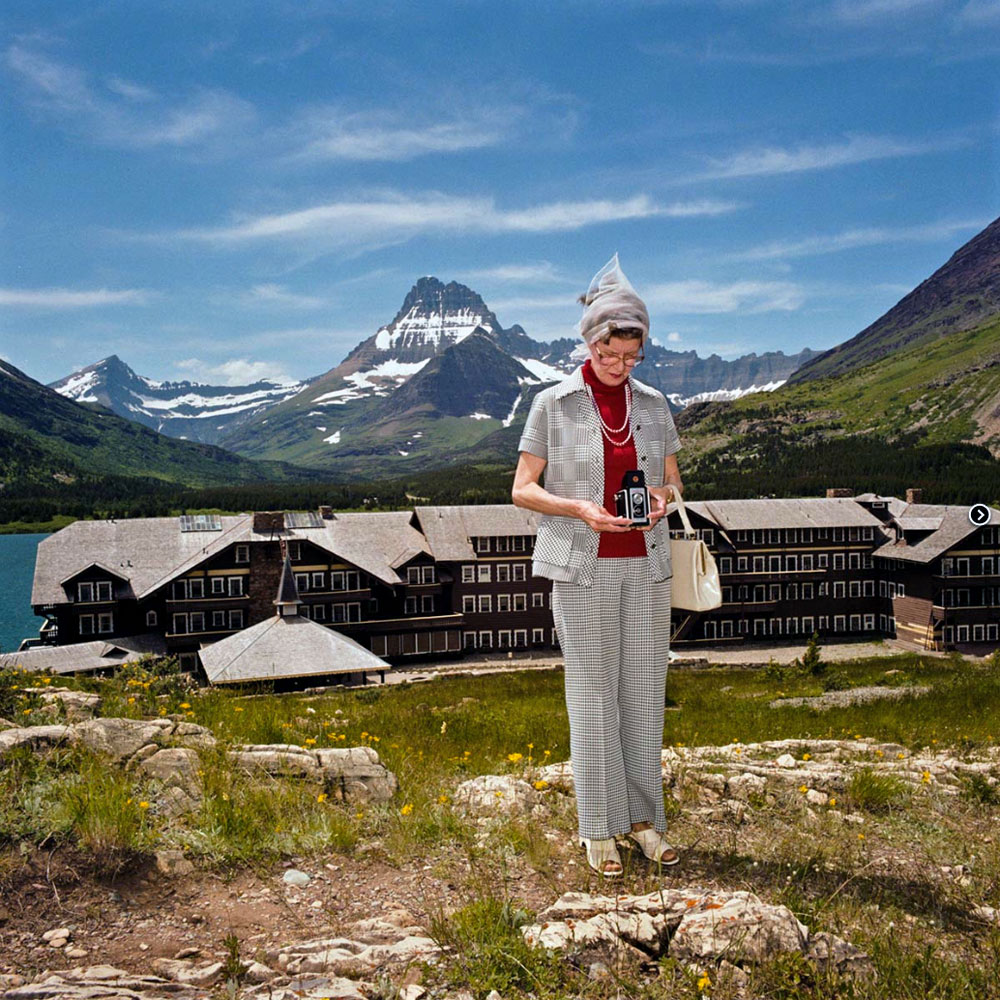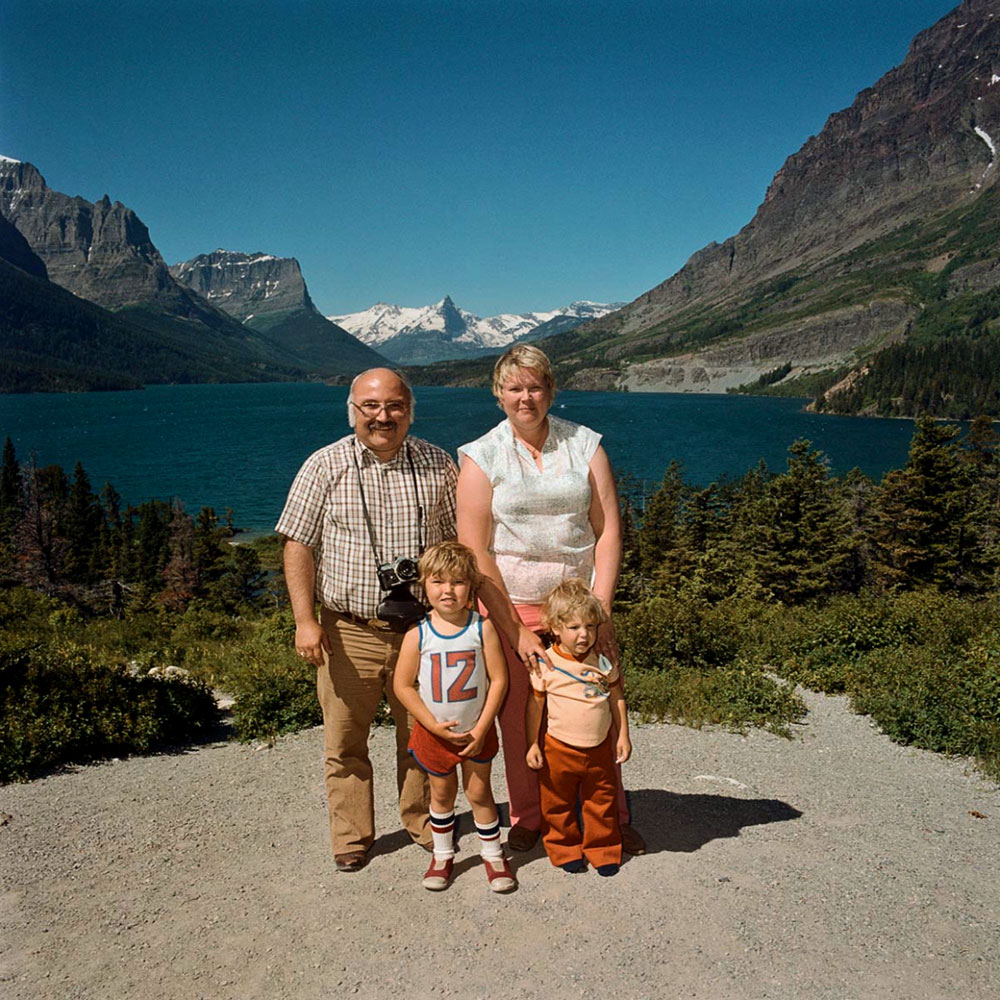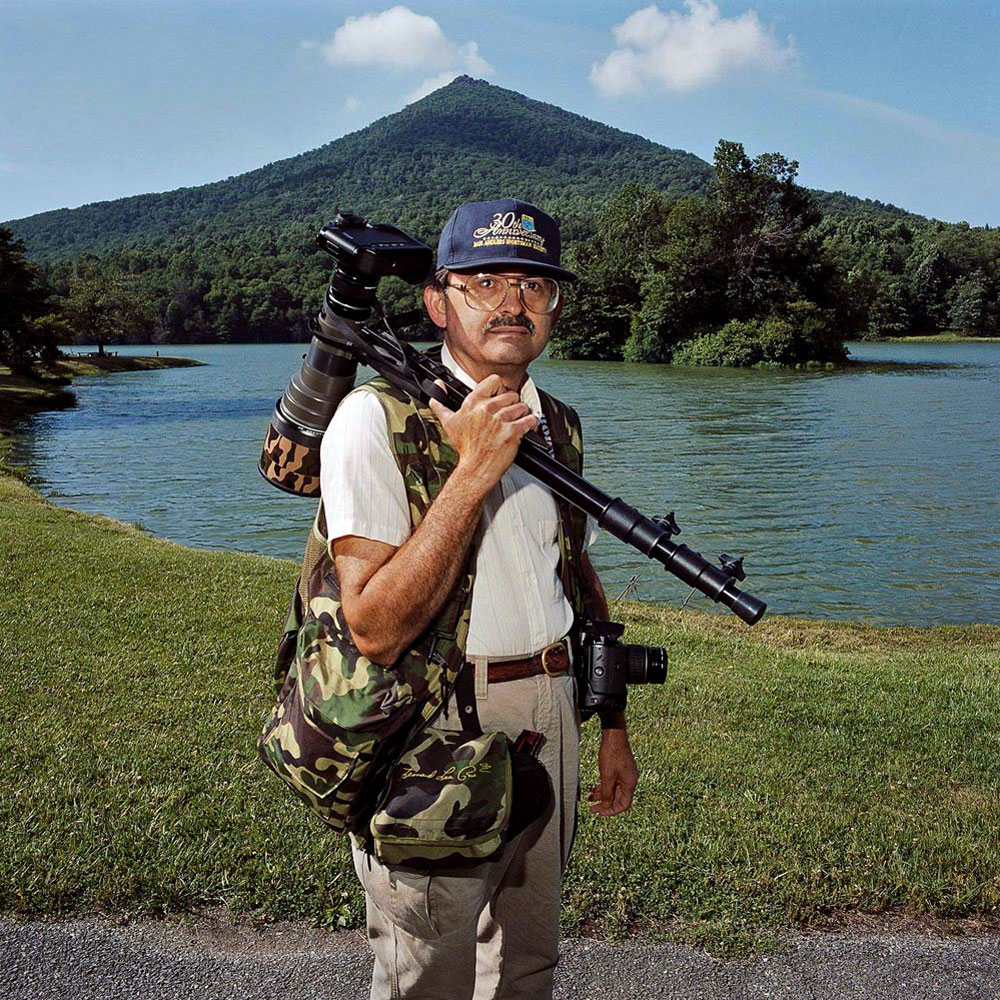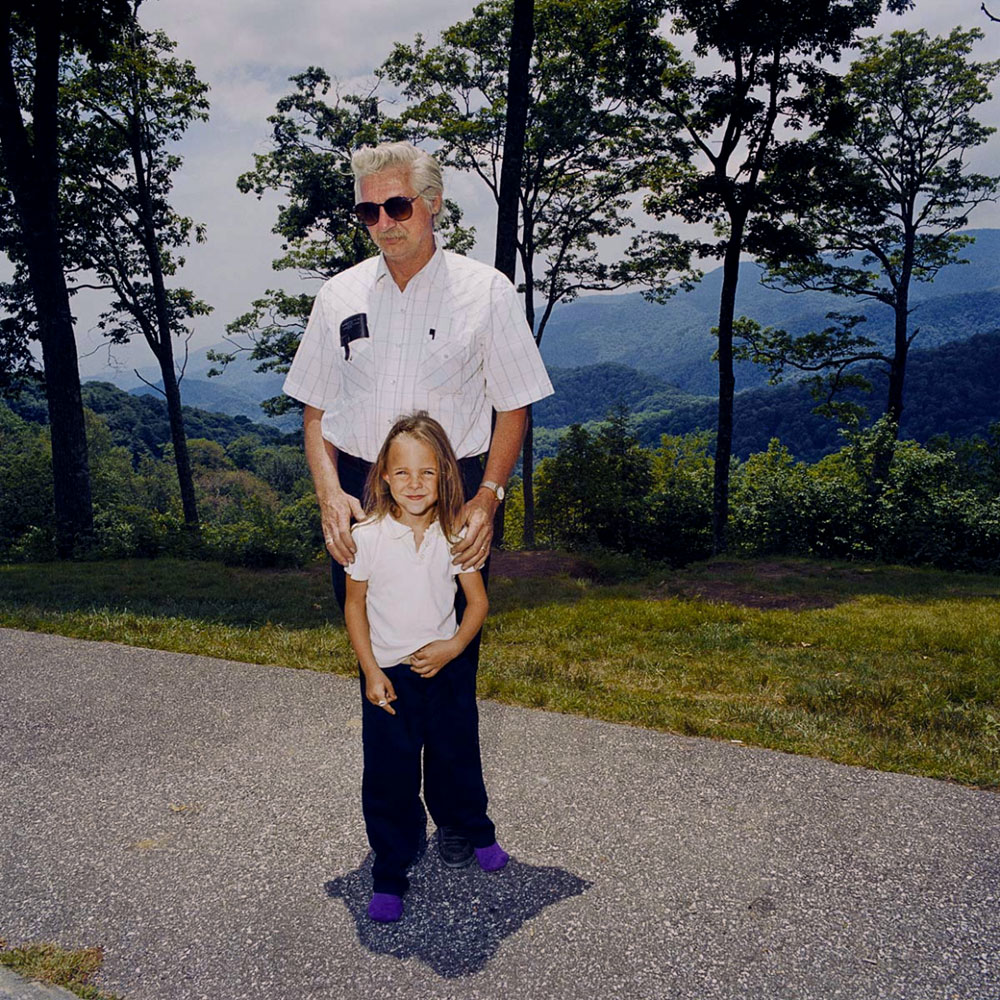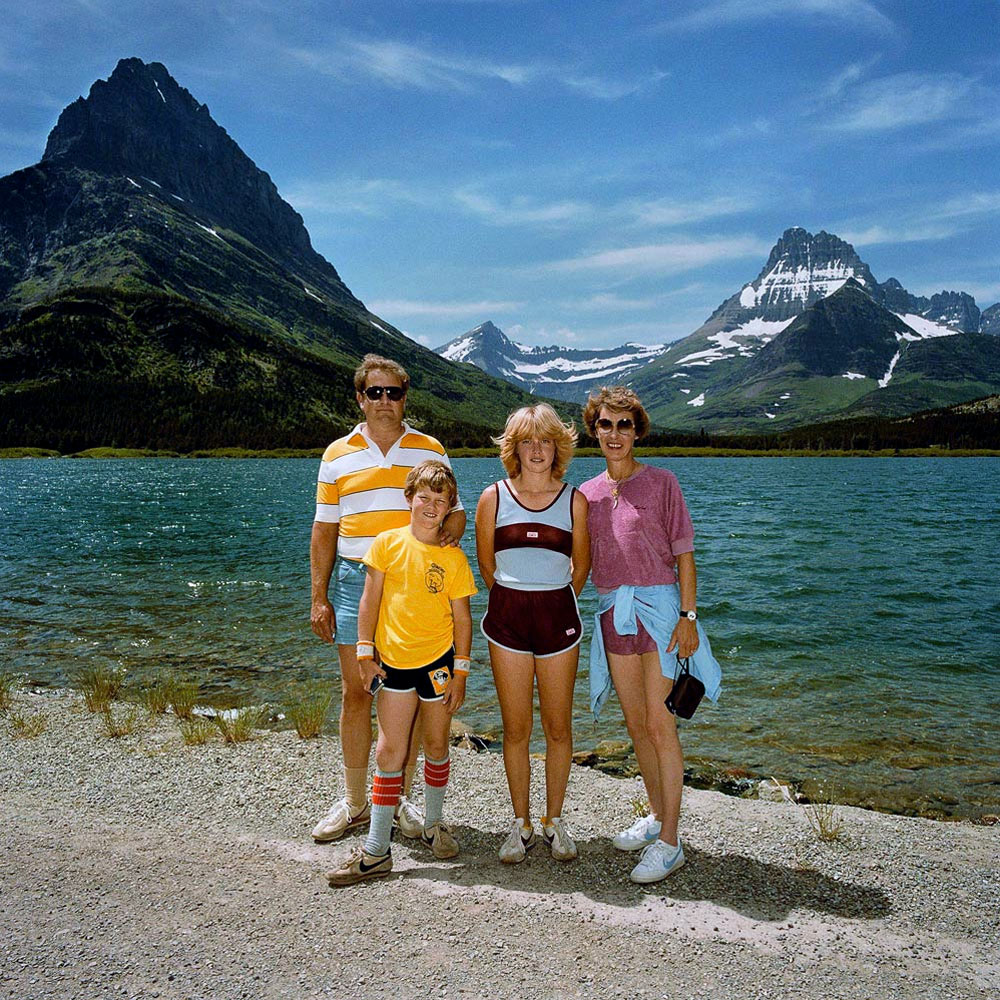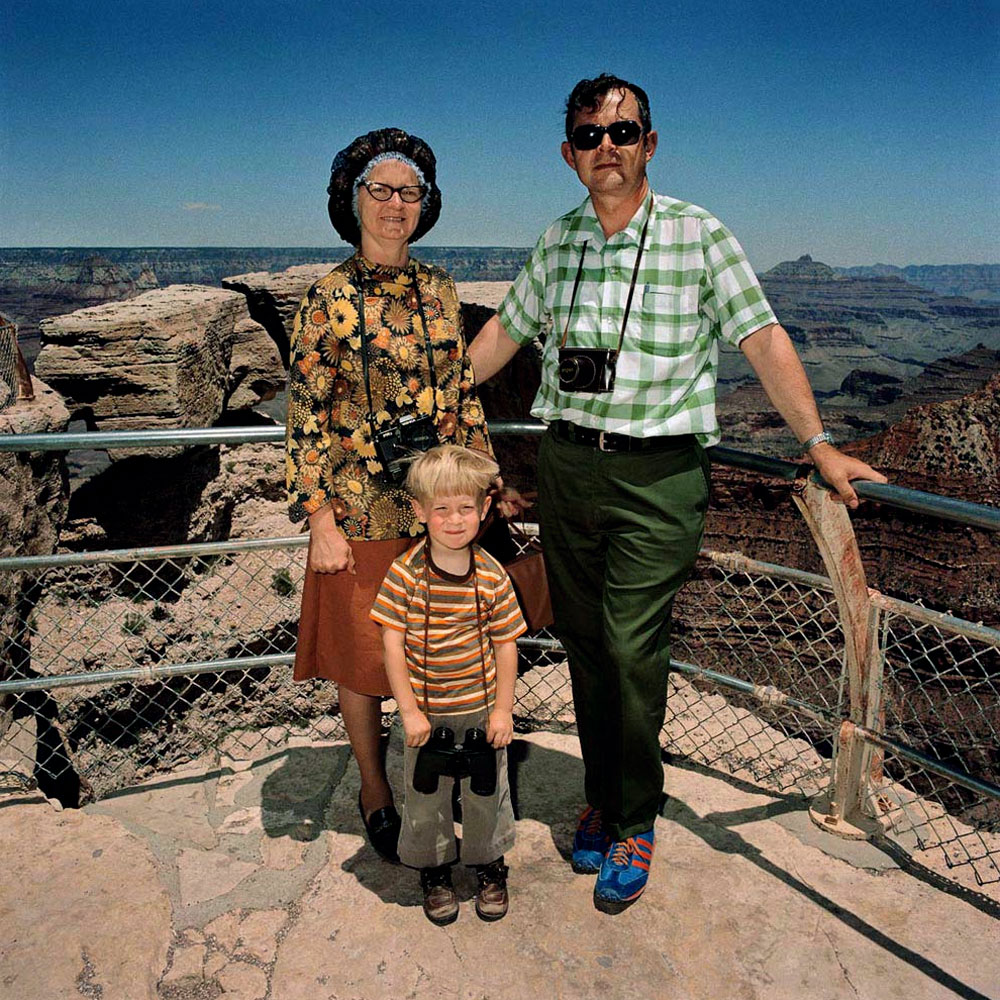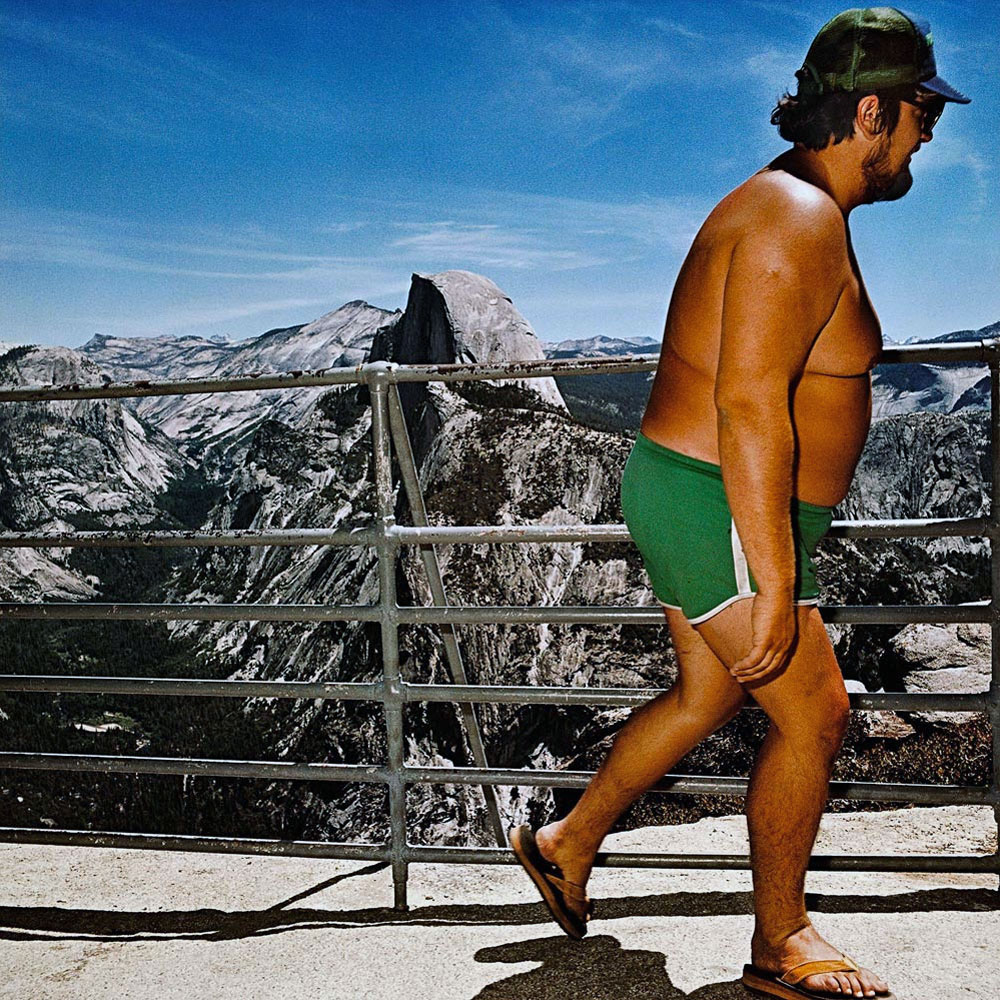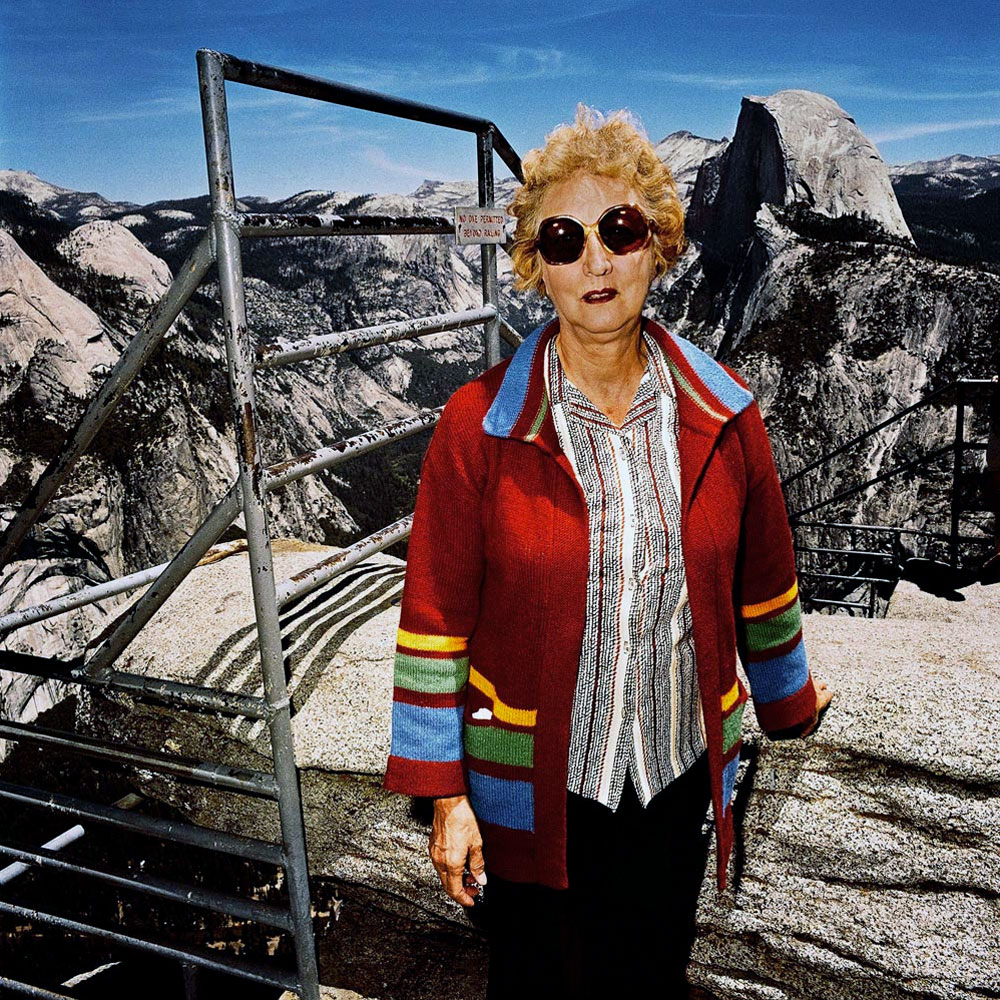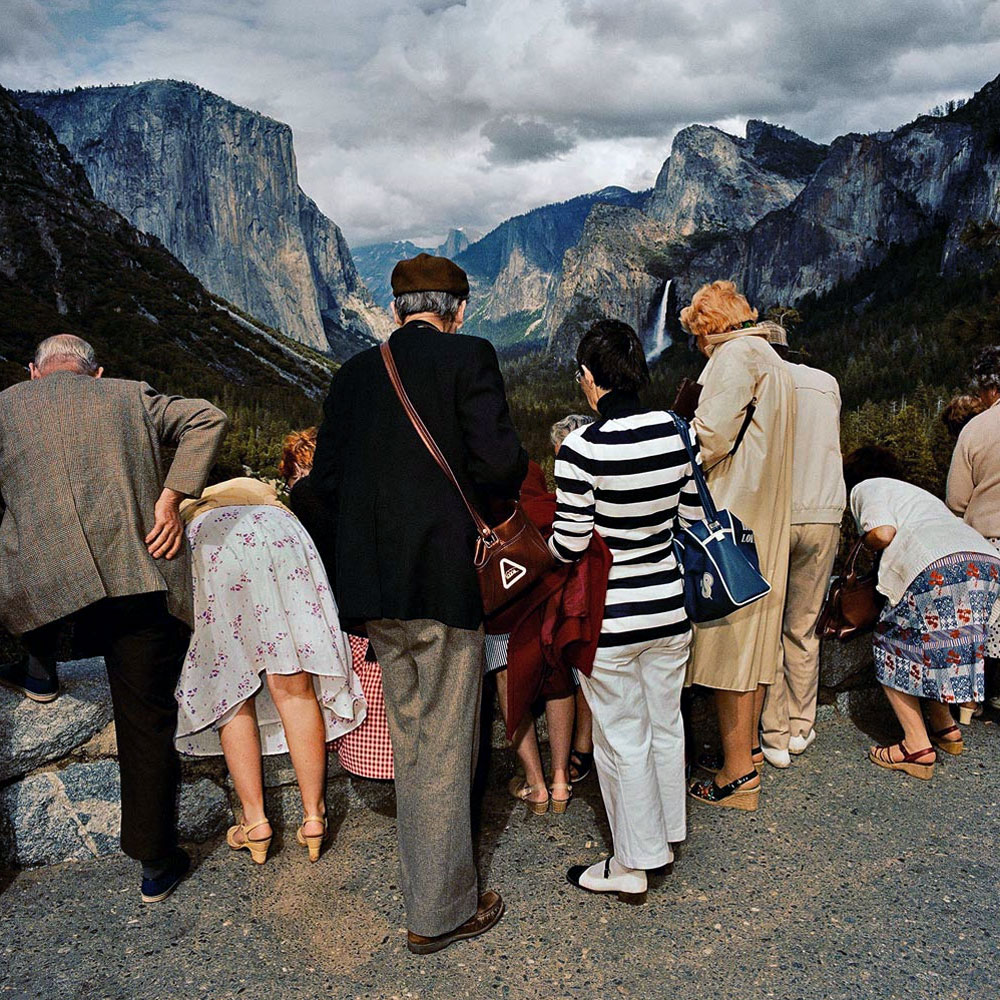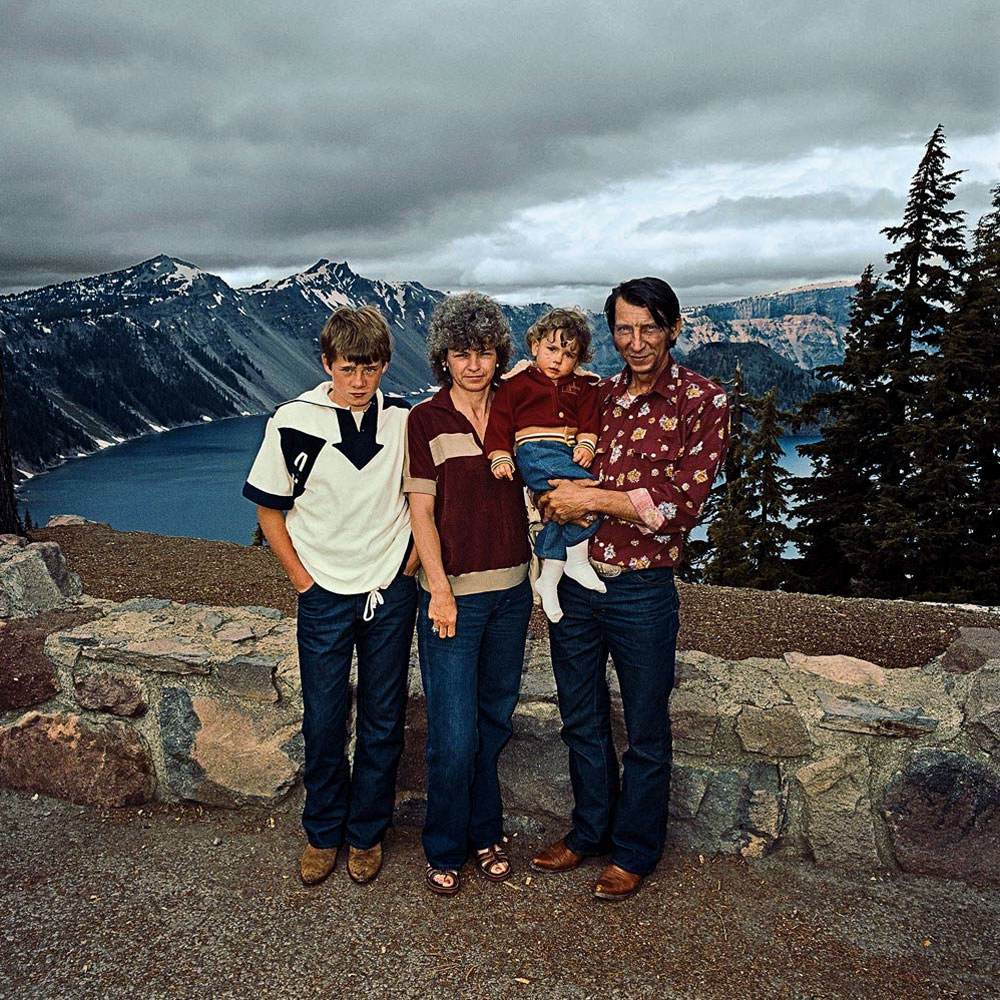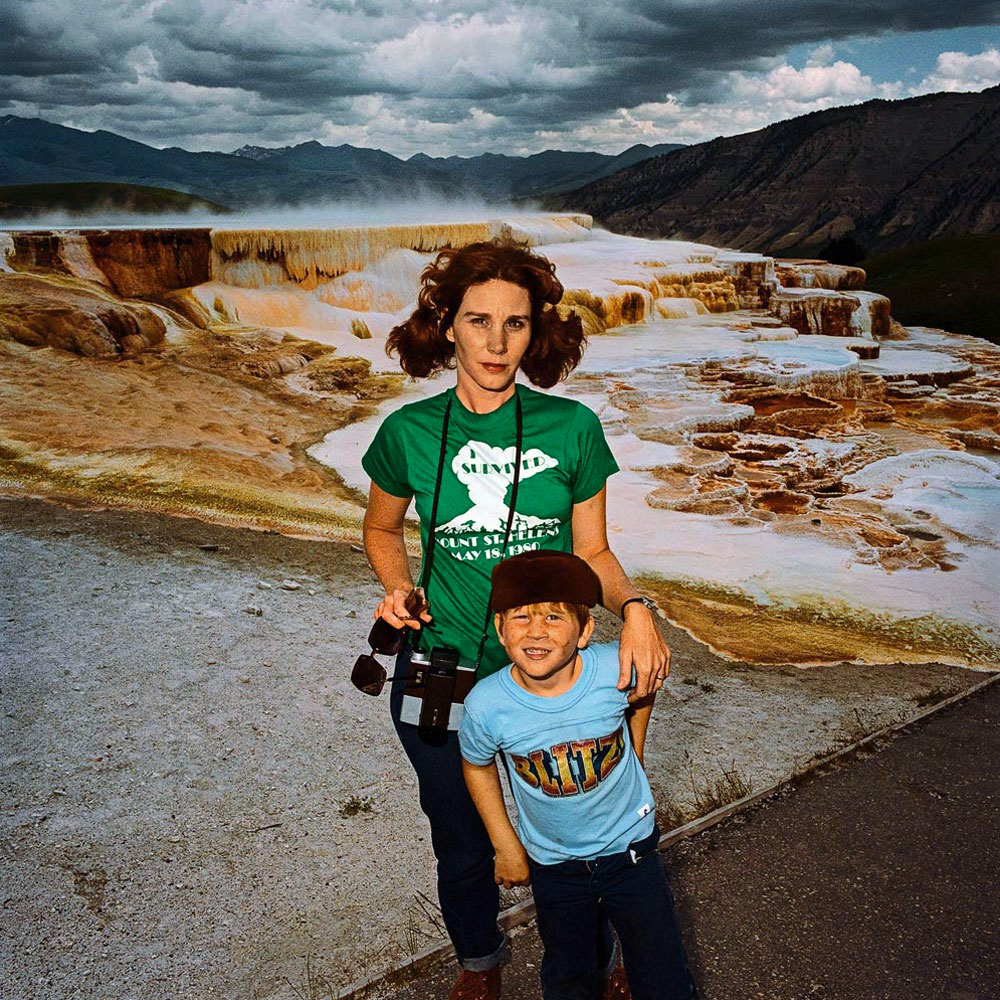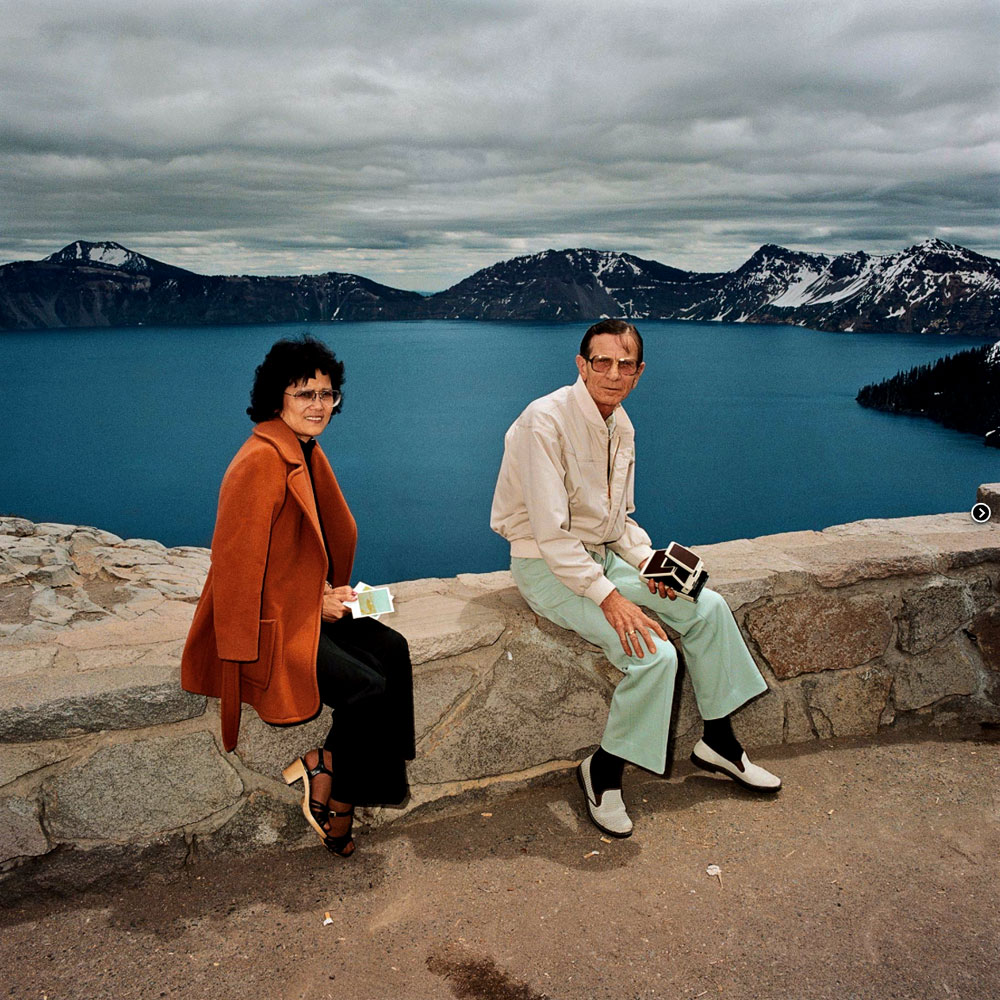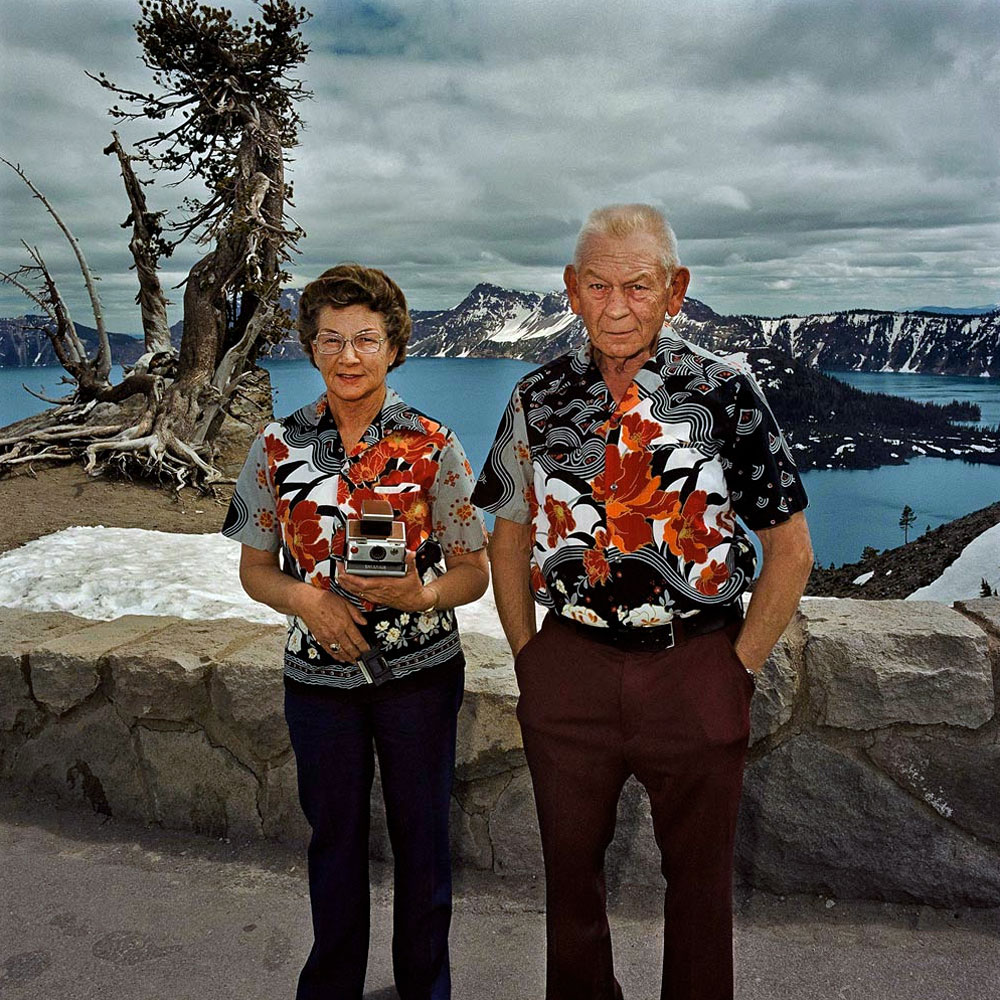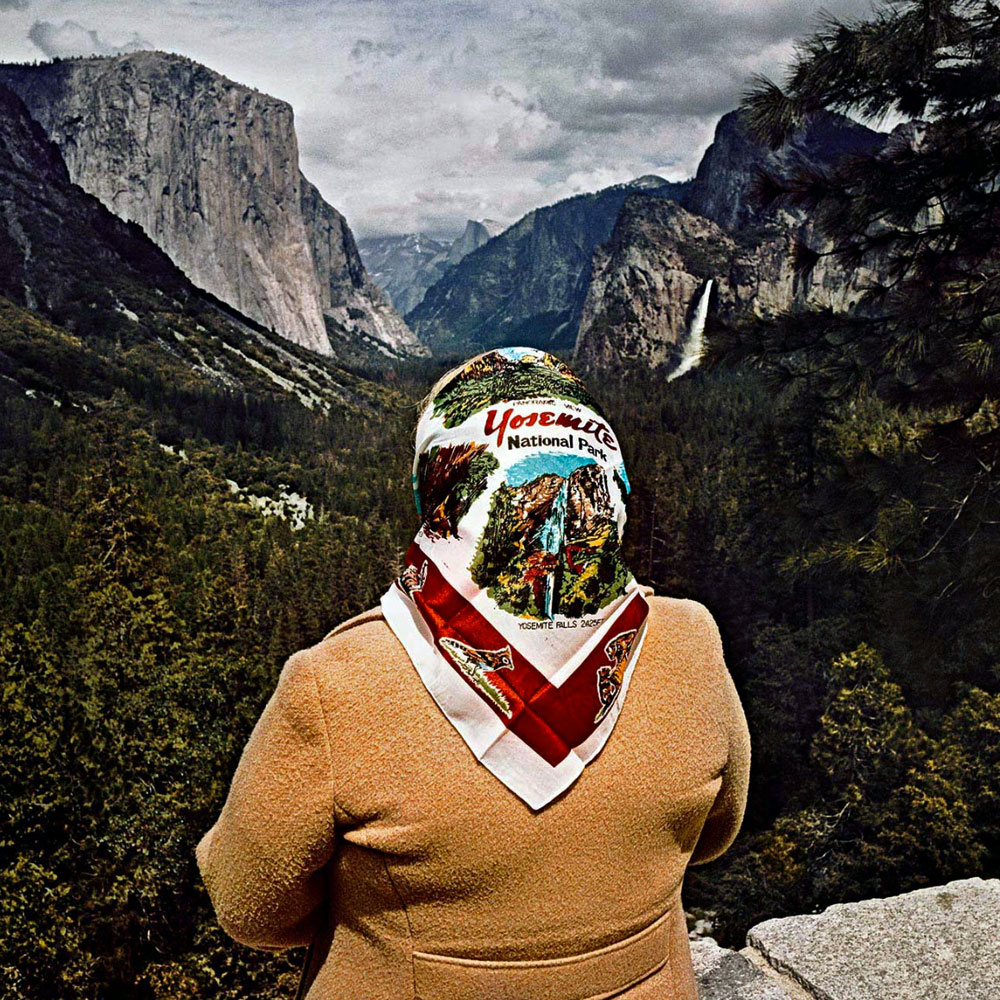by Roger Minick
Excerpts from Field Notes
… It wasn’t long, however, before I became aware of something else going on at the overlook: waves of tourists were continually arriving at the overlook’s parking lot in cars, buses and motorhomes, thrusting their way through this gauntlet of photographers not only for a clear view of the famous vista but also for the obligatory snapshot of themselves proving they were there. After witnessing this recurring bit of theater over several days, I found myself becoming increasingly fascinated with these visitors, recognizing what a striking cross section of humanity they were. I began to see the visitors as having a specific humanity, their own classification, a genus––Sightseer Americanus, if you will.
When I approached people for a portrait, I tried to make my request clear and to the point, making it clear that I was not trying to sell them anything. I explained that my wife and I were traveling around the country visiting most of the major tourist destinations so that I could photograph the activity of sightseeing. I would quickly add that I hoped the project would have cultural value and might be seen in years to come as a kind of time capsule of what Americans looked like at the end of the Twentieth Century; at which, to my surprise, I would see people often begin to nod their heads as if they knew what I was talking about.
I would then offer them a free portrait of themselves in front of whatever they had come to see, using a Polaroid camera I also had strapped around my neck. Once I had their permission, I went to work quickly, having learned that sightseers are on a tight schedule, are tired and exhausted from miles and miles of travel, and so had little patience for lots of photos. In fact, I generally felt lucky if I was able to get off three exposures in one session. If people were in a chatty mood or seemed to be particularly at ease, my encounters might last longer, but in most cases I made my portraits within a matter of minutes. Although I instigated most of the portrait sessions, there were times when the portraits came about on their own, such as when visiting tourists might ask me to take a picture with their camera so that everyone in their family or group could be included. I would gladly accommodate, of course, and if I sensed a possible portrait for my series, I would then ask if I might be able to take a picture of them with my camera.
… my technical approach to the portraits was simple and straight forward. For one thing, I hand-held the camera, which allowed me more spontaneity. Also, I chose to use 400 ASA film, which gave me a fast shutter speed for maximum depth of field. As I had done with the black and white work the year before, I used an on-camera flash, setting it to give me just the right amount of “fill light” to light faces in mid-day sun, so that eyes didn’t become lost to shadows under hat brims.
The use of flash had another advantage: I could make it equalize foreground light with background light, which often gave a false-backdrop or diorama look to the photograph, an effect that I grew to like enormously. As for how I posed the people, I was greatly inspired by the simple snapshot, having always been fascinated by its directness and unpretentious simplicity.
